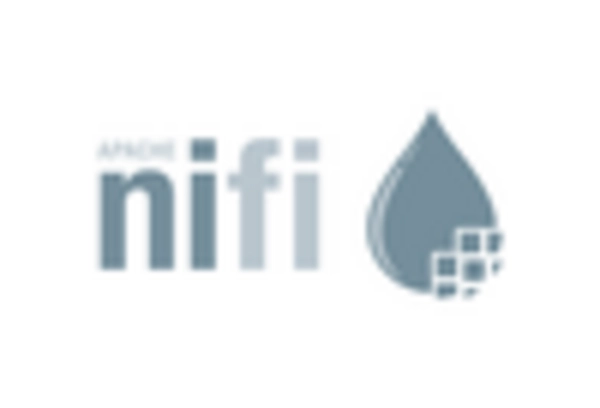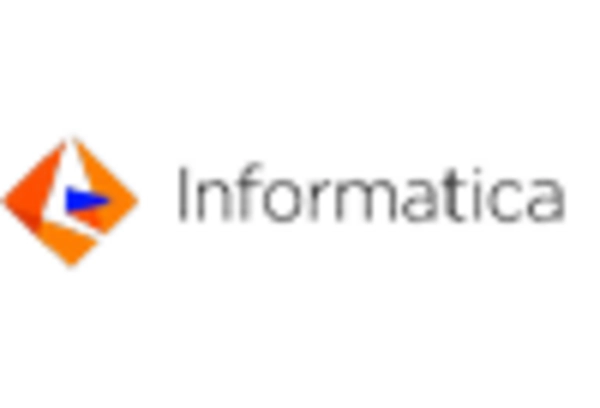Increased Data Volume
The exponential growth of data generated by businesses and consumers is a primary driver for the Data Pipeline Tools Market. As organizations collect vast amounts of data from various sources, the need for efficient data processing and management becomes paramount. According to recent estimates, the total data created worldwide is expected to reach 175 zettabytes by 2025. This surge necessitates robust data pipeline tools that can handle, process, and analyze data in real-time, ensuring that businesses can derive actionable insights swiftly. Consequently, the demand for data pipeline solutions that can scale and adapt to increasing data volumes is likely to propel the market forward.
Adoption of Cloud Technologies
The shift towards cloud computing is significantly influencing the Data Pipeline Tools Market. Organizations are increasingly migrating their data storage and processing to cloud platforms, which offer flexibility, scalability, and cost-effectiveness. The cloud services market is projected to grow at a compound annual growth rate of over 20 percent, indicating a robust demand for cloud-based data pipeline tools. These tools facilitate seamless integration and management of data across various cloud environments, enabling businesses to optimize their data workflows. As more companies embrace cloud technologies, the need for specialized data pipeline solutions that can operate efficiently in cloud ecosystems is expected to rise.
Focus on Real-Time Data Processing
The increasing need for real-time data processing is a significant driver of the Data Pipeline Tools Market. Businesses are recognizing the value of timely insights for decision-making, leading to a demand for tools that can process and analyze data instantaneously. Industries such as finance, e-commerce, and healthcare are particularly reliant on real-time data to enhance operational efficiency and customer experience. The market for real-time data processing solutions is projected to grow at a rapid pace, with estimates indicating a potential increase of over 25 percent in the coming years. As organizations prioritize agility and responsiveness, the demand for data pipeline tools that facilitate real-time processing is likely to surge.
Integration of AI and Machine Learning
The integration of artificial intelligence and machine learning technologies into data pipeline tools is driving innovation within the Data Pipeline Tools Market. These advanced technologies enable organizations to automate data processing, enhance predictive analytics, and improve decision-making capabilities. The AI market is projected to reach over 500 billion dollars by 2024, indicating a substantial investment in AI-driven solutions. As businesses seek to leverage AI and machine learning for data analysis, the demand for data pipeline tools that support these technologies is expected to grow. This trend suggests a shift towards more intelligent and automated data processing solutions.
Regulatory Compliance and Data Governance
The growing emphasis on regulatory compliance and data governance is shaping the Data Pipeline Tools Market. Organizations are increasingly required to adhere to stringent data protection regulations, such as GDPR and CCPA, which mandate the secure handling and processing of personal data. This regulatory landscape compels businesses to invest in data pipeline tools that ensure compliance while maintaining data integrity and security. The market for data governance solutions is anticipated to grow significantly, with estimates suggesting a potential increase of over 15 percent annually. As companies prioritize compliance, the demand for data pipeline tools that incorporate governance features is likely to expand.

















Leave a Comment